Edward Burne-Jones - Gifted Gallery
- Lilium

- Mar 7, 2021
- 5 min read

Sir Edward Coley Burne-Jones, 1st Baronet, born 28 August 1833, was a British artist and designer associated with the phase of the Pre-Raphaelite movement, who worked with William Morris on decorative arts as a founding partner in Morris, Marshall, Faulkner & Co.

Alongside painting, Burne-Jones was involved in the rejuvenation of the tradition of stained glass art in Britain and worked in crafts; including designing ceramic tiles, jewellery, tapestries and mosaics.
Burne-Jones's paintings were one strand in the evolving tapestry of Aestheticism from the 1860s through the 1880s, which considered that art should be valued as an object of beauty engendering a sensual response, rather than for the story or moral implicit in the subject matter. In many ways this was antithetical to the ideals of Ruskin and the early Pre-Raphaelites. Burne-Jones's aim in art is best given in his own words, written to a friend:
"I mean by a picture a beautiful, romantic dream of something that never was, never will be – in a light better than any light that ever shone – in a land no one can define or remember, only desire – and the forms divinely beautiful – and then I wake up, with the waking of Brynhild."

Perseus and Andromeda
Burne-Jones would often paint in series rather than one stand alone piece. In one series he tells the story of Perseus and Andromeda.
A son of Zeus, Perseus alongside Cadmus and Bellerophon, was considered one of the greatest Greek hero and slayer of monsters before the days of Heracles. He is sent on an quest to retrieve the head of Medusa, whose gaze turned people to stone.
In Greek mythology Andromeda is the daughter of Cepheus and Cassiopeia, king and queen of ancient Ethiopia. Her mother Cassiopeia foolishly boasts that she is more beautiful than the Nereids. To punish the queen for her arrogance, Poseidon floods the Ethiopian coast and sends a sea monster named Cetus to ravage the kingdom's inhabitants. In desperation, King Cepheus consults the oracle of Ammon, who announces that no respite can be found until the king sacrifices his daughter, Andromeda, to the monster. She is thus chained to a rock by the sea to await her death.
Perseus is just then flying near the coast of Ethiopia on his winged sandals, having slain Medusa and carrying her severed head. Upon seeing Andromeda bound to the rock, Perseus falls in love with her, and he secures Cepheus' promise of her hand in marriage if he can save her. Perseus kills the monster with the magical sword he had used against Medusa, saving Andromeda.
The final painting in the series shows Perseus and Andromeda at peace in a beautiful and fruitful garden. In order to convince Andromeda that he is the son of Zeus and claim her hand in marriage Perseus shows her Medusa's head, taking care to look only at the reflection in the water.
Love Among the Ruins

Love Among the Ruins exists in two versions, a watercolour completed in 1873 (damaged in 1893 and restored in 1898) and an oil painting completed in 1894. It depicts a man and a woman amid ruined architecture. The ambiguous scene without a clear narrative is considered one of Burne-Jones' best works.
The title refers to Robert Browning's poem Love Among the Ruins, published in Men and Women in 1855. The work depicts two lovers in blue robes, a man and a woman, seated together on a stone capital amid the ruins of buildings. A broken column is at their feet, covered with briar rose, perhaps an allusion to Burne-Jones' Briar Rose series (two below). In the background is a door with a frieze of putti, and arches leading into the distance. The setting may be influenced by the ruins of Polyandrion from the book Hypnerotomachia Poliphili (The dream of Poliphilus).

Hope
Hope was painted on commission for Mrs. George Marston Whitin of Whitinsville, Massachusetts in 1896.
Mrs. Whitin originally requested a painting of a dancing figure, but Burne-Jones, devastated by the recent death of his long-time friend and partner William Morris, struggled with the work and wrote to ask if a painting of Hope would be an acceptable alternative. The result was an allegory in the Renaissance fashion, with the bound personification of Hope reaching skyward despite her bars.
The painting is based on an 1871 watercolour by Burne-Jones. The watercolour is likely painted over the original cartoon for one of a set of stained glass designs of the Christian virtues Faith, Hope, and Charity created by Burne-Jones for Morris, Marshall, Faulknor and Company. A three-light window based on Burne-Jones's designs was commissioned for the nave of Christ Church Cathedral, Oxford. The stained glass designs were also used for a set of windows at St Margaret's Church, Hopton-on-Sea, Norfolk and St Martin's Church, Brampton, Cumbria.
The oil painting of Hope was donated to the Museum of Fine Arts, Boston by Mrs. Whitin's daughters in her memory.

The Legend of Briar Rose
The Legend of Briar Rose is a series of paintings which Burne-Jones completed between 1885 and 1890. The paintings depict a moment in the story of "Sleeping Beauty", the title of the series coming from the version presented by the Brothers Grimm in their collection of 1812.
The paintings do not tell a sequential story but record the same moment in each location.
The four original paintings – The Briar Wood, The Council Chamber, The Garden Court and The Rose Bower – and an additional ten adjoining panels, are located at Buscot Park in Oxfordshire, England.
The four original paintings are:
The Briar Wood
The painting depicts the discovery of the sleeping soldiers by a Knight. In their slumber they have become completed entwined by the barbed thorns of the Briar rose.
Running beneath each of the major panels is an inscription of a poem by William Morris, the inscription reads:
"The fateful slumber floats and flows About the tangle of the rose; But lo! the fated hand and heart To rend the slumberous curse apart!"

The Council Chamber
The painting shows the scene in the Council chamber. The members of the council sleep, as does the King who is slumped on his throne. Under the draped curtains and through the window further soldiers can be seen sleeping. The inscription reads:
"The threat of war, the hope of peace, The Kingdoms peril and increase Sleep on, and bide the latter day When Fate shall take her chain away."

The Garden Court
The painting shows the weavers having fallen asleep at their loom. The walls of the castle form the backdrop to the painting as do arches of roses. The inscription reads:
"The maiden pleasance of the land Knoweth no stir of voice or hand, No cup the sleeping waters fill, The restless shuttle lieth still."

The Rose Bower
The sleeping beauty lies on her bed surrounded by her slumbering attendants. The rose is seen encircling the drapery in the background, the inscription reads:
Here lies the hoarded love, the key To all the treasure that shall be; Come fated hand the gift to take And smite this sleeping world awake."

The four major panels were first exhibited at Agnew's Gallery in Bond Street, London in 1890. They were acquired by Alexander Henderson, later to become Lord Faringdon, for Buscot Park. When Burne-Jones visited the house and saw the paintings in their new setting he decided to extend the frames of each of the four paintings and fill in the gaps with joining panels which continued the rose motif from the main paintings.
Reading Recommendations & Content Considerations
265 Plates Edward Burne-Jones
Maria Peitcheva Fiona MacCarthy




















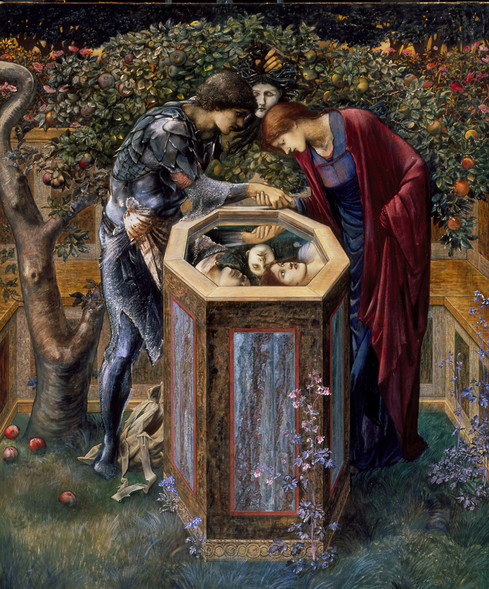



































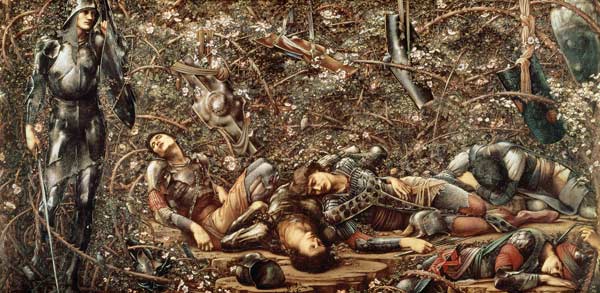























































































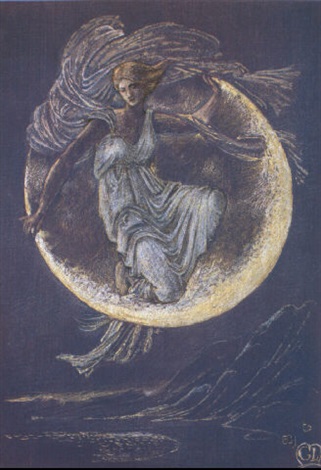





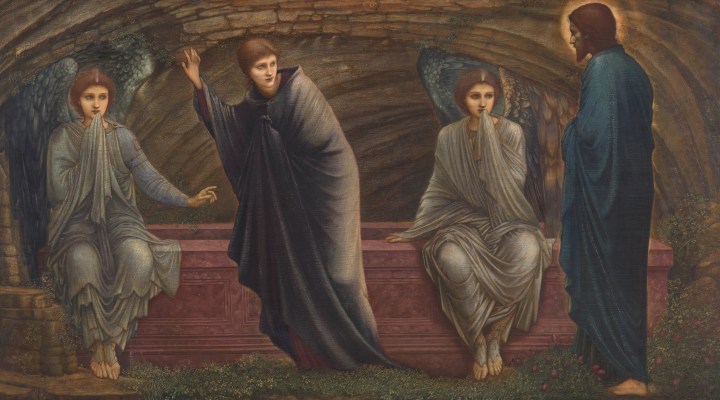





































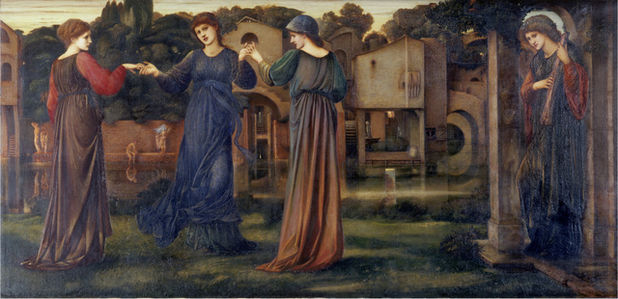











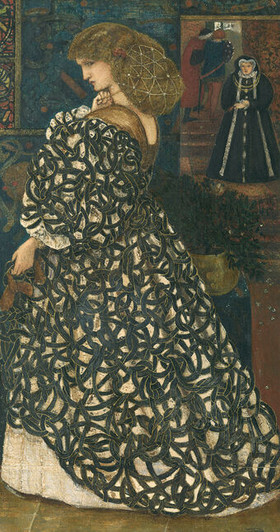

















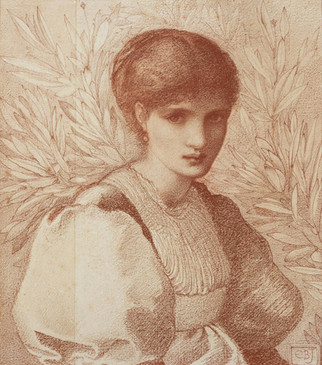























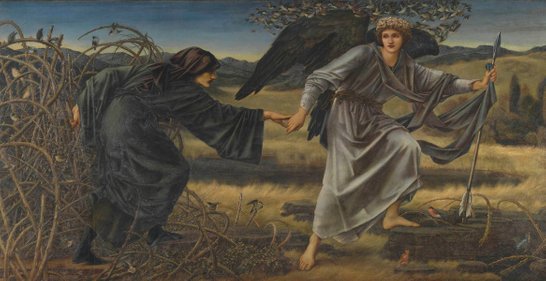









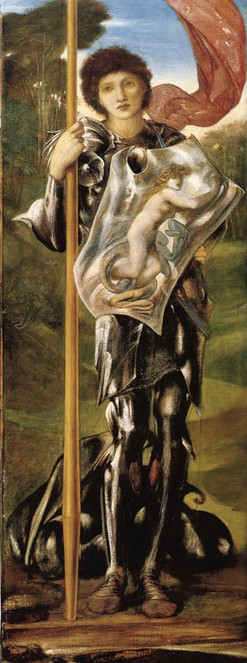

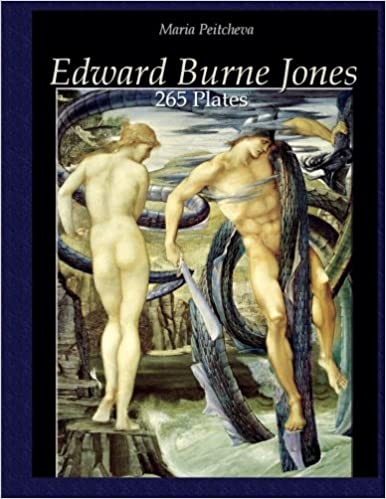

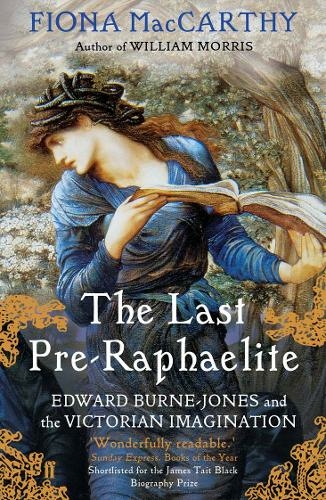



Comments